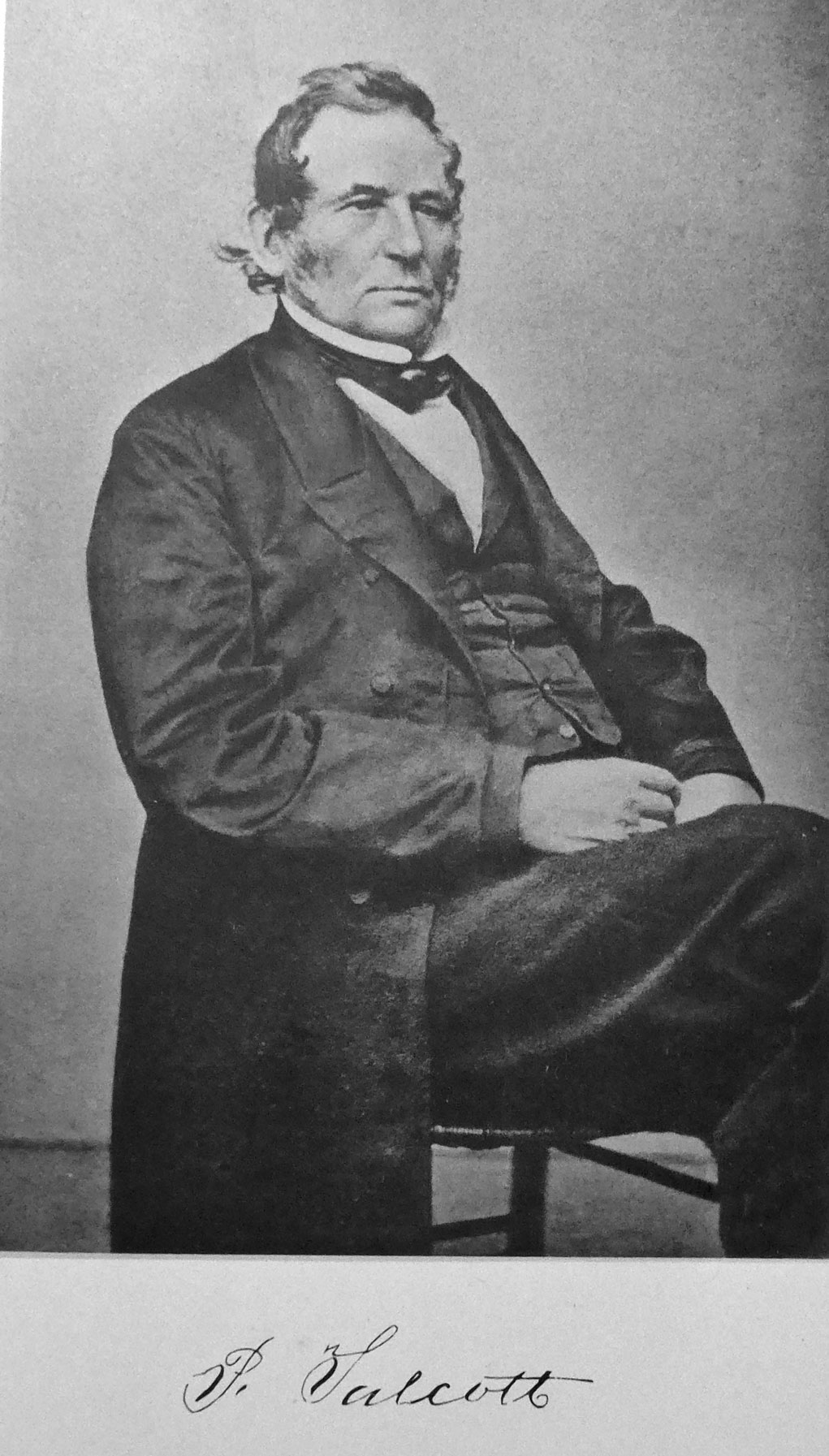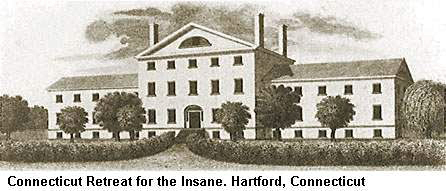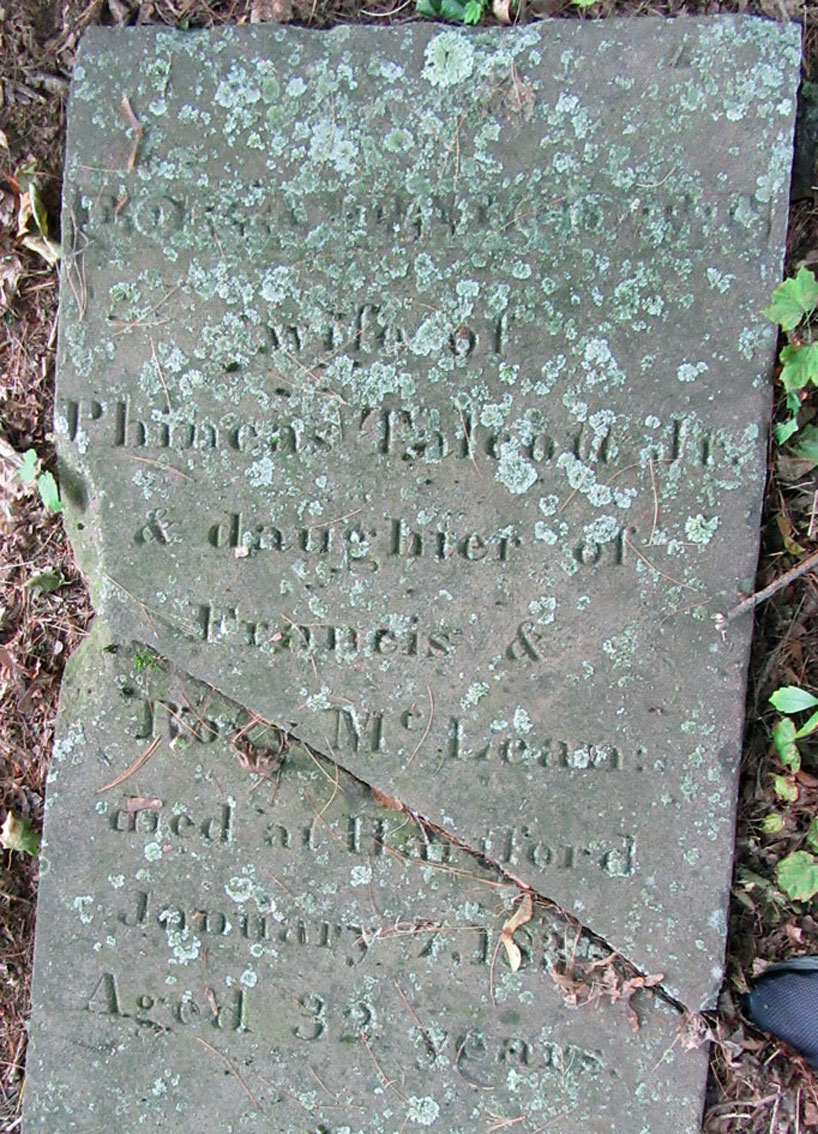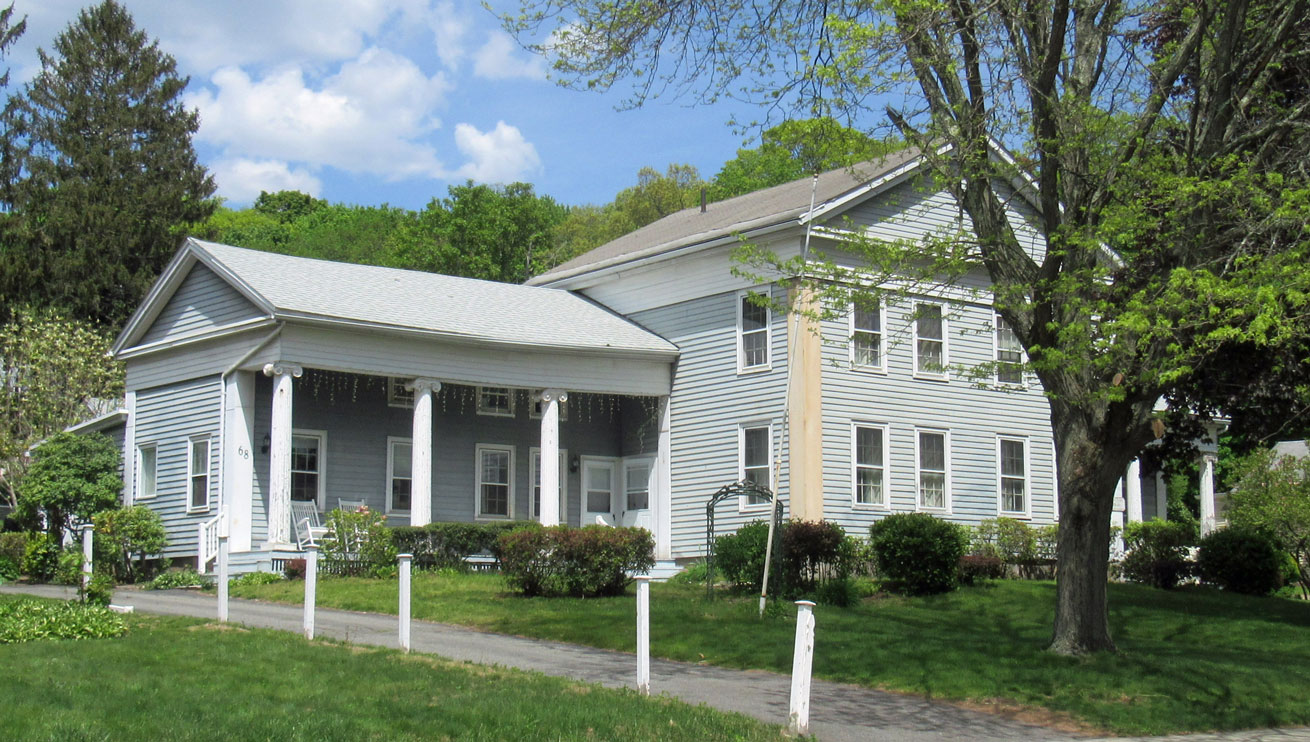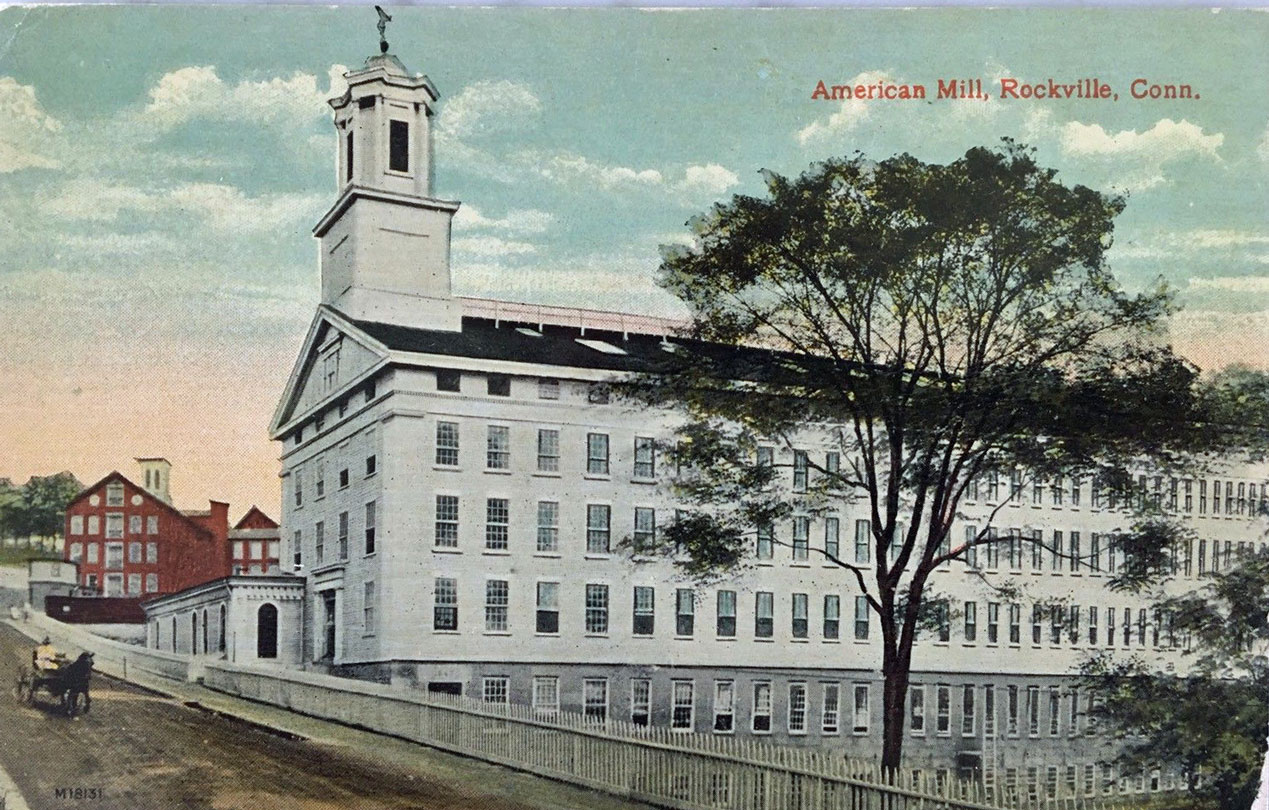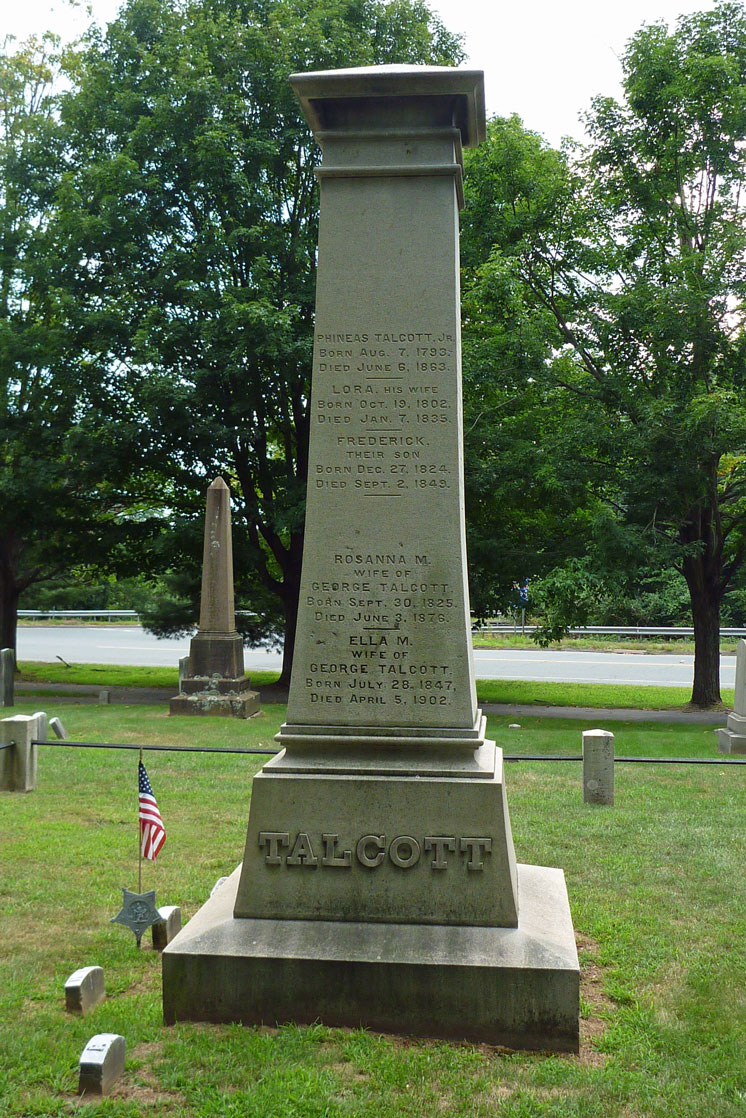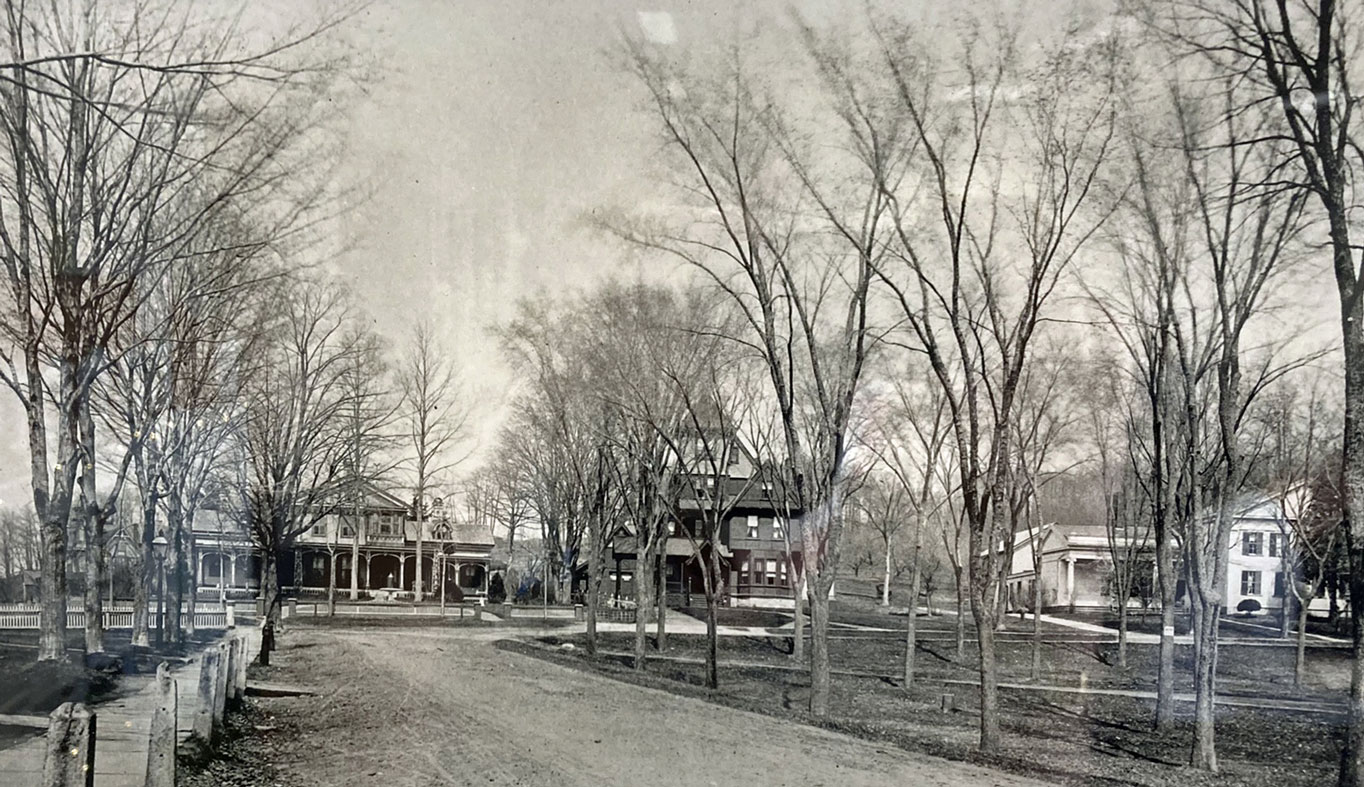 |
| Home | Geography | History | Biology | Recreation | News | Resources |
| Timeline | Narrative | Events | Places | People |
Phineas Talcott, Jr - Teacher & Industrialist
Phineas Talcott, Jr was born Aug. 7, 1793, in North Bolton, CT to Deacon Phineas Talcott (1758-1835) and Hannah Kellogg (1768 -1836). Hannah was the daughter of our first minister Rev. Ebenezer Kellogg. The Talcott family were early settlers in Bolton and the many branches of the family contributed to Vernon's growth and success. Rev. Kellogg's descendants also played important roles in early North Bolton and Vernon. Thus Phineas, Jr was born into the merger of two of the most important families in town and will marry into a third. Deacon Phineas Talcott was a farmer, as were most of the other prosperous land owners living near Vernon Center. His farm was located at the corner of Bolton Road and the road to the meetinghouse, near today's Vernon Senior Center. He and Hannah had eight children. Deacon Talcott was very involved with town affairs holding many positions in the early government, was a representative in the State Legislature for many sessions and one of the delegates who created the State Constitution of 1818. His son, Phineas, Jr, would have attended the local school next to the meeting house with the sons of other farmers, who during their lifetime, built the mills along the Hockanum River, formed Rockville and developed it into a thriving, successful industrial city in one generation. Conversations at family dinners must have been interesting as his uncles were investing in and managing mills throughout town. Phineas, Jr was part of Rockville's story, but his journey was much different than his peers. The options were few in the early 1800's for young men who preferred not to become farmers, although growing up on a farm he certainly shared the chores and may have continued there for a time. The primary college in Connecticut was Yale where his grandfather Ebenezer Kellogg and some of his cousins had attended, but the careers were primarily for ministers or lawyers. An option that did not require college at this time was education. He probably received some special training because in 1820 at age 27 he took a teaching position in Colchester for a year and then transferred to Glastonbury for the 1821-1822 year. From there he was hired by Hartford and put in charge of the Stone School House where he supervised 600 pupils and 10 teachers. It was at this time in 1823 at age 30 that he married Lora McLean from his hometown. Lora was the daughter Francis McLean, who was at the time building the Rock Mill, the first large mill on the Hockanum River. This connected Phineas, Jr to a third powerful Vernon family as the Kellogg's, Talcott's and McLean's were major players in making Rockville an industrial city. But Phineas and Lora continued in another direction. In January 1828 at age 35 he was appointed steward of the Hartford Retreat For The Insane in Hartford and Lora became its beloved matron. The Hartford Retreat For The InsaneFollowing the Revolutionary War's end in 1783, dependant adults, such as the elderly, disabled, or unemployed, would be cared for by their families within the home. In some towns and cities, the means existed for small almshouses to care for the unfortunate. Communities might also set up programs that contracted out the poor and disabled to labor at whatever tasks they could perform.The mentally ill could not easily fit into this early American system of family and community care. Options for these individuals typically focused on confinement.
At the outset of the 1800's concern for the care of dependents became infused with a missionary zeal. The drive to save souls took on special meaning when dealing with the mentally disabled, whose souls, it was felt, would be lost without proper religious attention. Similarly, medical thought on mental illness had begun to shift away from treatment of the body alone. The Hartford Retreat for the Insane, chartered in 1822, was a prime example of these shifting attitudes towards insanity. The hospital was built in 1823 and was opened to patients in 1824. It was among only four facilities of its kind in the nation and was capable of accommodating 40 to 60 patients. From the time it opened for patients in 1824 to about 1843, the Hartford Retreat was a small, semi-public institution that focused on using a moral curative approach. This included creating a tranquil, kind environment to pacify patients and allow a respite from the hectic pace of the era's social, political, and economic changes. Care givers perceived that through conversation, exercise, relaxation, and above all kindness, patients could be soothed into becoming productive members of society once more. Phineas and Lora Talcott worked with Eli Todd, the first director, from 1928 to 1835 helping to develop programs and the character of the institution. In its first 10 years, the Retreat boasted the highest cure rate in the nation and, possibly, the world. Learn more about the Hartford Retreat.Lora McLean Talcott (1802-1835)
Lora was the love of Phineas' life. Nine years his junior he likely met her in Vernon through their families or the church. We know about her as near the end of his life her father Francis McLean wrote his memoirs. Lora was born October 19, 1802 in Vernon to Francis McLean and Roxey McKinney from Ellington. In his memoirs Francis tells this story which provides an insight as to how children and particularly girls were raised and learned to adapt. "When she was about seven months old, as I came in from work one night, her mother came and put her into my lap as she wished to go about her chores. There were two or three tailoresses there at work. Well, she began to scream and wanted to go to her mother again. Her mother came for her, but I said ‘no.' I knew she was old enough to mind. I gave her a few blows with my hand, and when she had got through screaming and kicking, I talked to her a few minutes. This I did three times, when she was conquered, stood up in my lap, put her arms around my neck and kissed me as pleasant and good-natured as she ever was. I kept her with me a while and then told her mother she might have her. It was the first, last and only time I ever punished her." Lora was educated in Miss Catherine Beecher's Hartford Female Seminary and married Phineas Talcott, Jr in 1823. They were the parents of two sons, Frederick and George. She was a small-sized, delicate woman of fine fastidious tastes, yet very efficient. She was much beloved by the inmates of the Retreat who spoke of her as ‘Good Mother Talcott.' Sadly she died there January 7, 1835 at age 31 which had a devastating effect on Phineas. Phineas Return To VernonIn May of 1835, just a few months after Lora's death Phineas returned to Vernon to his parents' home on Bolton Road with his two sons.
He and his brother Ralph then made an extensive tour through the West, chiefly prospecting for land. This might have been his way to grieve, clear his head and decide what to do next. Going by way of Buffalo they crossed the lake to Sandusky, Ohio, where they purchased horse and saddle and with equipment for traveling rode to Quincy, Illinois, where they remained a short time before returning to Rockville. The trip may have been cut short because his father Deacon Phineas died in December 1837 and his mother the following January. A year later Phineas became the agent of the Rock Manufacturing Company working for his father-in-law. He was now 44. He resigned after just five years from the Rock Manufacturing Company to try farming in 1842. He bought Dr. Scottaway Hinkley's farm, which included land north of Prospect Street. At the time this was considered the choicest residential section of Rockville upon which were located many of the city's finest homes. In 1846 he built the house on Prospect Street where he spent the rest of his life. There he continued to farm as he carried on his many other interests. Phineas Talcott, Jr IndustrialistPhineas never remarried. The remainder of his life was focused on his many business interests and Rockville. In 1846 purchased a grist and saw mill on the Hockanum River in Rockville and began construction of the American Mills, of which he was the largest stockholder and its president until his death. He also controlled a one-third interest in the Springville Mill, was treasurer of the Aqueduct Company, president of the Rockville Railroad Company, and in 1859-60, was president of the Savings Bank of Rockville.
He also engaged in politics. From 1844 to 1858 he was judge of probate for the Ellington Court district, and for many years a prominent justice in Tolland County. At times during this period he was first selectman of Vernon and town agent, a representative in the State Legislature, and was State Senator in 1851. Phineas was Probate Judge from the 1840's through the 1850's and the left wing of his home at 68-70 Prospect Street was the site of his courtroom. He was a member of the Rockville Congregational Church and was described as a man of heavy weight and commanding figure. He died in 1863 at the age of 70 after a fall on the street resulted in a concussion. He was buried in Elmwood Cemetery by the side of his wife whom he had mourned for thirty-one years. The Elmwood Cemetery Connection
Until 1835 Vernon's primary cemetery was the Old Burying Ground of North Bolton on Bamforth Road. By 1826, when the new Congregational Church in was built in Vernon Center, a new cemetery was needed, one that was closer to the church with a more contemporary design. Elmwood Cemetery was consecrated in 1835 and burials began in the same year that Phineas, Jr's wife and parents died. The Talcott's would have been some of the earliest burials and the Talcott plot was located at a prime location near the entrance. It is likely they were initially simple gravestones until the monument was built with all the family names and relationships. When it was built replacing the original gravestones it appears that Phineas, Jr. removed Lora's gravestone to his farm above Rockville. Lora's original stone is now on private property on Cliff Street that at one time may have been part of Phineas, Jr's farm. It was likely moved several times as the property was divided and homes were built in the area. It is broken, but still legible. Talcott Park & Talcott's HouseThe land across from his home on Prospect Street, which he used as a pasture, was donated to the town and named Talcott Park in 1895. Originally used as a cow pasture Talcott Park developed in the 1860's and 1870's as a small city park with many fine houses along its perimeter. The park association planted elm trees and marked the boundaries with a rail fence. Later, a fountain and bandstand were added. The elms were toppled in the Hurricane of 1938, but were replaced by maple trees which continue to provide a shady stop for pedestrians.
Talcott's House on Prospect Avenue later became the Union Church parsonage and for a few years until 1980 housed the Vernon Historical Society in one of its wings. SourcesAbbott, S. Ardis (2003). Building the Loom City - Rockville, Connecticut 1821-1908. Available from the Vernon Historical Society. Brooks, George S. (1955). Cascades and Courage. 529 pages. This is the classic local history book. The entire text can be found and searched online. Cogswell, William T. (1872). History of Rockville From 1823 To 1871. An annotated update was published by and is available from the Vernon Historical Society, 2006. Cole, J. R. (1888). History of Tolland County, Connecticut. 992 pages. Commemorative Biographical Record of Tolland and Windham Counties Connecticut Containing Biographical Sketches of Prominent and Representative Citizens and of Many of the Early Settled Families, Chicago: J. H. Beers, 1903. https://connecticuthistory.org/hartford-retreat-for-the-insane-advanced-improved-standards-of-care/ Created April 2023 |
Home | Activities | News | References | Search | Site Map | Contact Us © Copyright The Tankerhoosen. All rights reserved. |
